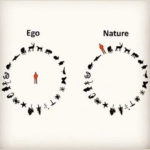
Amanda Stern – who has fought anxiety throughout her full and productive career – writes of Dr. Tamar Chansky’s suggestions for handing rumination. What follows is an excerpt:
I could think of no better person to help me (…) than Dr. Tamar Chansky, psychologist, author, and founder of the Children’s and Adult Center for OCD and Anxiety in Plymouth Meeting, PA.
“Rumination is the process of having repetitive thoughts that your mind gets you stuck on,” Dr. Chansky explains. “They are usually about a negative situation—a past relationship or interaction, a mistake, or some unfinished or pending problem—an upcoming test or challenge at work.”
In other words, thinking, like dreaming, is a way to process and digest information and rumination is a way to stymie that process.
I assumed that the opposite of rumination was simply just thinking, but it turns out it’s a bit more nuanced than that. “We don’t feel in charge of ourselves when we’re ruminating,” says Dr. Chansky. “Sometimes people can feel that it’s useful to ruminate, to be responsible, to analyze a painful event or relationship to try to gain a better understanding, but the retreading feels miserable.
It’s like trying to iron and re-iron out every wrinkle—what’s the point? People may describe their ruminations as they can’t stop their brain, they are overthinking it but can’t stop, their mind is in overdrive, or they feel trapped in their own head.”
“The opposite of rumination is deciding what you want to think about, having thoughts that you are choosing to think about, and getting to closure, or getting somewhere with those thoughts,” Dr. Chansky told me.
When you ruminate, you are recycling the same unresolved thoughts over and over again. If something is incomplete, the brain will keep it in circulation until it’s done. Dr. Chansky told me that in cognitive psychology, this is called “The Zaigerneck Effect.”
The first step to getting out of the pattern, Dr. Chansky tells me, is to “bring separation between you and the feeling that you need to be ruminating.” To do that she suggests labeling it. A practical tool for anyone interested in improving their mental health is to take a moment and give name to what is happening internally. When you’re stuck in rumination, stop and say: “This is rumination.”
While she admits that “this may not stop the process on a dime, it helps you be aware and mindful of what is happening.”
Another tip she has is to fact-check yourself. “Write out the ruminative thought—and fact-check it for accuracy,” says Dr. Chansky. “Ask yourself: Is this the truest description of the situation? If not, what is?”
In Tibetan Buddhism, there is a concept called “Shenpa” and it refers to that sensation of getting stuck on something when you’re too attached—much like rumination. Shenpa is the feeling you get when something pushes up against a pain point, and despite not wanting to feel it, you somehow cannot let it go. Someone says something that strikes you as particularly passive-aggressive and, despite a full night of fun ahead of you, suddenly you’re clenched on this one moment and you will not be able to let it go until you somehow find relief or closure. The concept of Shenpa—if you can remember it when you’re in its grip—wields a lot of power.
It’s remarkable how labels can take their shape. Either they mark you so deeply that you spend your life trying to shake free, or they release you from the burden of your exquisite pain. When I was finally diagnosed at age 25 with a panic disorder, just hearing the words that named my suffering felt like enough for me to heal.
Before I learned about Shenpa, I would do all I could do to avoid that oncoming discomfort in my body. But once I found a name for it, I began the practice of labeling the feeling, which created the distance that allowed me to examine it objectively, as something separate from me. I could observe it without becoming it. And once that happened, I could address it.
The truth is nothing is ever permanently resolvable, and the way that we can get unstuck is to accept this painful fact, and allow for uncertainty. After all, life is the process whereby we try and gain steady ground, but it is not steady ground. It’s never steady ground.






























